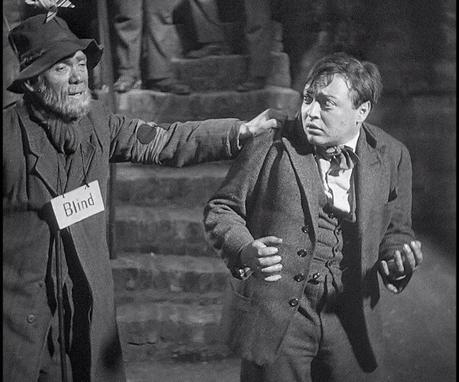 Fritz Lang's penultimate German film, M (1931) is rightly regarded as a classic. Lang's multilayered masterpiece works as crime drama, social statement and directorial tour de force.
Fritz Lang's penultimate German film, M (1931) is rightly regarded as a classic. Lang's multilayered masterpiece works as crime drama, social statement and directorial tour de force.A child murderer terrorizes Berlin, driving the citizens to panic. The police prove unable to catch him. Their heavy-handed methods infuriate Berlin's underworld, who decide to find the killer themselves. Suspicion soon falls on Hans Beckert (Peter Lorre), an ill-adjusted loner. The cops and crooks race each other to catch Beckert, who proves craftier than either imagine - and whose motivations prove heartrending.
On the simplest level, M is the precursor of the modern police procedural. The authorities resemble the harried cops in The Boston Strangler and Zodiac, investigations languishing due to contradictory leads and endless scrutiny. They're hamstrung by panicky citizens, who mistake bystanders for suspects, while their mass raids make things worse. Even with modern handwriting and fingerprint analysis they appear ineffectual. No wonder Berlin's criminals think they can do a better job!
Most critics view M as critiquing the Weimar Republic, whose dysfunctional democracy gave way to Hitler. Postwar Germany saw serial killers like Karl Denke and Peter Kurten, who seemed a natural extension of their "sick" society. Lang suggests this in ways obvious and subtle: restaurants rationing food, streets crawling with beggars and criminals, grotesque gangsters sucking huge cigars, the kangaroo court judging Beckert. Beckert almost seems sympathetic: he's at least driven by impulse rather than greed. It's possibly the earliest example of crime drama as social statement.
M's exquisite direction assures its classic status. Fritz Amo Wagner's moody photography and smoke-filled interiors strongly anticipate films noir. Lang also presages the suggestive imagery of Val Lewton: after claims his first victim, a rolling ball and balloon caught in phone lines. Then there's the Expressionist touch of a blind man (Georg John) "witnessing" the crime, recycled in John Ford's The Informer. Lang uses imagery to heighten atmosphere and clarify character, resulting in a richly engaging experience.
Peter Lorre won international fame as Beckert; if Hollywood typecast him as sleazy creeps, at least Lorre excelled at them. Lorre barely appears before the end, seen fleetingly stalking his pray, yet his haunted visage and impassioned final plea make an indelible impression. There's a deep supporting cast, some of whom play broadly (Gustaf Grundjens as the crime boss) while others give more naturalist turns (Otto Werincke and Theodore Loos' police officials). But Lorre's the one you come away remembering.
Most crime films of the past 80 years draw on M, whether in the directorial style or the tormented antagonist. But its mixture of artistry and potent symbolism help Lang's film stand out from its successors.
PS: Happy 1,000th post, Groggy readers. Thanks for your continuing support.

